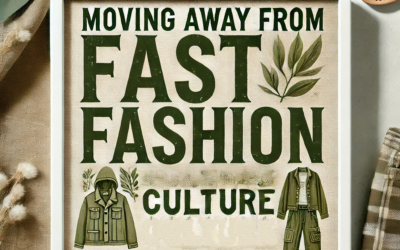Fashion has always been a record of culture, a way to carry identity through fabric, cut, and movement. Yet today it stretches beyond its familiar boundaries, becoming a space where innovation and memory collide. What once existed only as ornament or signal now expands into performance, technology, and resilience. Every thread carries more than texture—it carries potential. In this unfolding era, the act of wearing becomes participation in the future weave, a fabric that does not only cover but connects, shaping identity in motion.

Looking back, fashion has always responded to progress. Ancient weaving techniques changed economies, pigments redefined trade, and new silhouettes transformed societies. But while history was marked by gradual shifts, the present is defined by acceleration. Materials breathe, adapt, and evolve. Sneakers are designed to react to steps, fabrics monitor climate, and designs bend tradition with innovation. Clothing no longer reflects the world passively; it collaborates with it, anticipating need and reinforcing endurance.
Science underscores this transformation. Fibers built at microscopic levels can resist stress, regulate heat, and repair themselves. Algorithms predict demand, enabling design that adapts faster than ever. What once relied on human intuition is now amplified by artificial intelligence. Yet despite its technological frame, this new fashion is deeply human—it extends the body rather than replacing it. It is not decoration but adaptation, a living archive shaped by routine and circumstance. This adaptability becomes adaptive form, where every cut and seam responds to presence rather than imposing itself.
Culture evolves in parallel. Communities build identity not only through heritage but through engagement with change. Style becomes a medium of resilience, a declaration of alignment with progress. The sneaker is a badge of movement, the jacket a signal of awareness, the accessory a statement of possibility. Fashion in this space resists being static; it becomes dynamic storytelling. No single garment defines identity; rather, it is the layering of choices across days, contexts, and environments.
Nature provides metaphors for this continuity. Just as rivers redraw landscapes, roots adapt silently to soil, and light refracts into infinite colors, fashion unfolds in patterns that resist permanence. It absorbs pressure, records impact, and continues forward. In this, clothing resembles ecosystems: adaptive, layered, and responsive. The presence it creates is neither fixed nor fleeting—it is evolutionary, building momentum with each gesture of care and each repetition of choice. This continuity becomes the endless pattern, a design that does not conclude but expands, reaching across generations and geographies.
To understand fashion as woven futures is to see it as more than industry or ornament—it is a map of survival, creativity, and memory. Every garment is both archive and hypothesis, a fragment of culture carried into tomorrow. Each thread tells a story not only of the present but of what comes after. Fashion, in this sense, becomes a promise: that identity can remain resilient even as it evolves, that presence can be reinvented without being erased. It is not simply clothing—it is the architecture of tomorrow’s culture, woven daily, worn boldly, and carried forward without end.
You can write to us at fashionnovationfd@gmail.com
We read and publish your articles!
You may also like to read our similar articles:
Where to buy high-quality rep shoes? (Men & Women)
Fashion Detox: How to Escape the Fast Fashion Trap
Style Soars: Why Your Handbag Deserves to Steal the Spotlight!




0 Comments